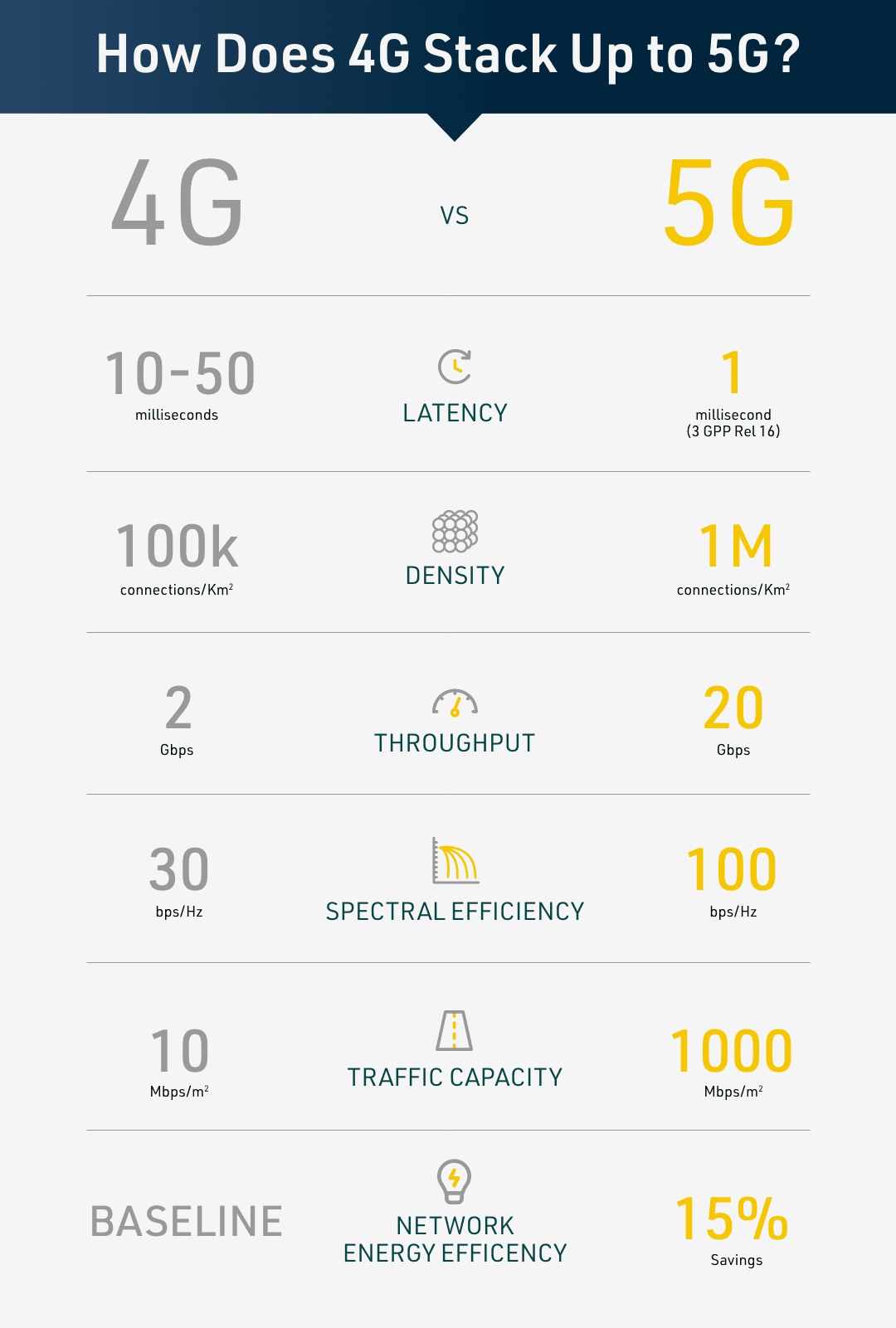5G Will Revolutionize Wireless Technology
By Marco Stracuzzi
July 31, 2020
5G represents a revolutionary leap forward for wireless technology. Verizon claims that 5G could bring speeds up to 200 times faster than its current 4G LTE network. More conservative estimates state 5G could be 10 times faster than 4G. Speeds will vary between networks based on the type of 5G technology used.
In addition to higher speeds, 5G promises lower latency, taking the average LTE latency of over 10 milliseconds down to 1 millisecond. 5G can also operate on multiple spectrum bands. On the low-band (sub-1 GHz) spectrum now generally used for LTE, speeds will max out at about 100Mbps.
The mid-band spectrum offers speeds up to 1 Gbps but less ability to penetrate buildings. The propagation loss above 4 GHz will be compensated for by massive multiple-input multiple-output (MIMO) technology, which groups multiple antennas together at a single cell tower.

Range is more of an issue in the high-band spectrum (also called mmWave), but it is here that 5G really shines with speeds up to a possible 10 Gbps.
While the field is crowded in the lower frequencies with only a few bands available, the range between 28 GHz and 39 GHz is fairly open. Miniaturized antennas and more processing power have made these frequencies usable in ways they previously were not.
High-speed 5G technology works by using smaller cells that can connect many more devices at once than a 4G cell. The applications for the technology are too numerous to list — from connected smart home appliances and robotic technology to autonomous and networked cars.
Ford has announced that, by 2022, all of its vehicles with their C-V2X system will be equipped with 5G, which will enable cars to communicate with each other and with 5G-equipped traffic signals.
Sensors can connect a city’s infrastructure over 5G, allowing public works departments to operate more efficiently. Faster speeds and improved bandwidth can enable streaming of 4K/8K HDR video. Lower latency will greatly improve the experience of augmented and virtual reality, multiplayer online games and teleconferencing.
5G’s low latency also has significant implications for remote technology, allowing for precise remote surgeries and remote control of heavy machinery. From security systems and IoT to military, healthcare, and industrial applications, 5G will create faster, more responsive networks around the world.
The upgrade requires tremendous infrastructure investments, so the full scope of 5G (all 5G NR and core networks) may remain unavailable to most consumers for several years. One Intel executive estimates that 5G is still within the first two years of an over 10-year transition, but as 5G technology slowly rolls out, 4G speeds will also significantly improve.
Because 5G primarily operates on high-frequency bands and covers shorter distances, it will initially serve urban areas, for the most part, and it will take some time for 5G to reach low-density geographies.
In Jeff Fieldhack’s article, “Key Takeaways from the Big 5G Event,” he states, “It is easy to be overcome by the hype and promises of 5G. When talking one-on-one with the major players within the ecosystem, it becomes clearer that the real benefits to society and the ecosystem are years down the road.”
Enhanced mobile broadband and fixed wireless service will be the first wave of 5G applications. With the standards for ultrareliable low-latency communication (URLLC) service not frozen until mid-2020 (3GPP Release 16), applications requiring these features will take a few years to roll out.
Editor’s Note: This post was first published on 27 June 2019 and has since been updated.